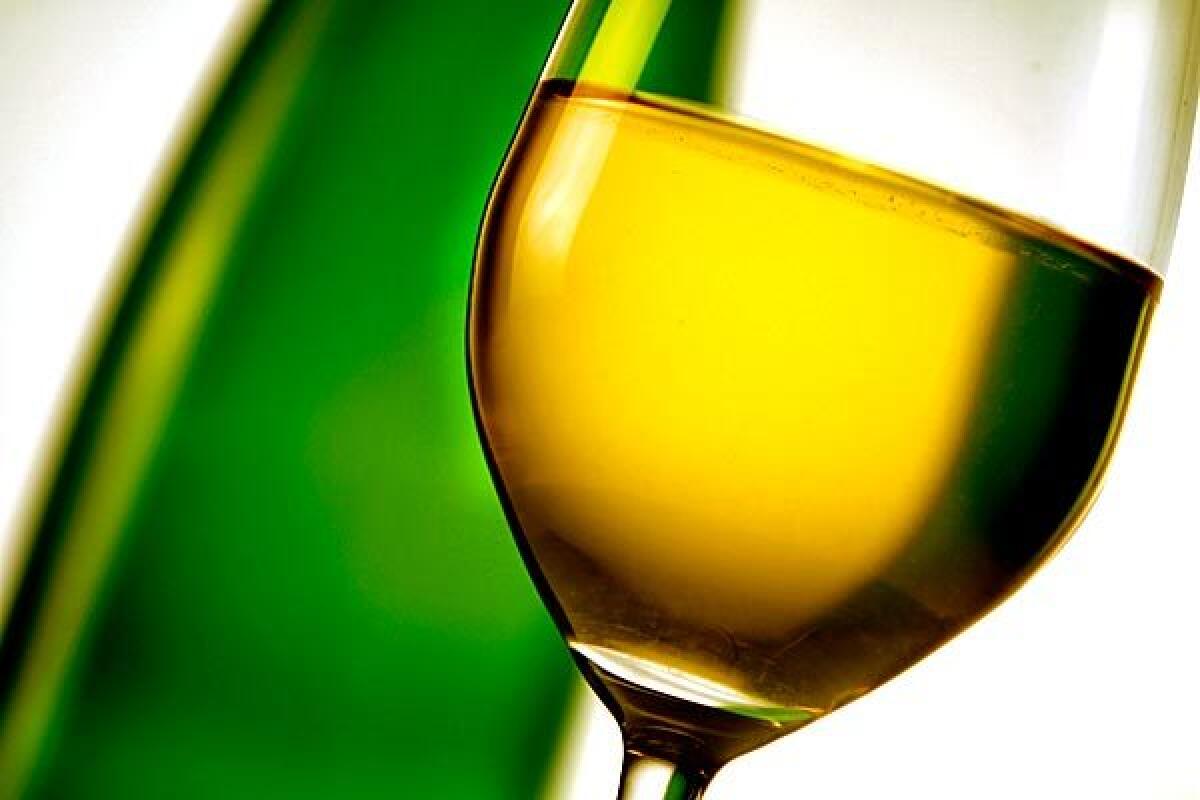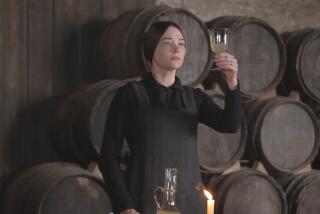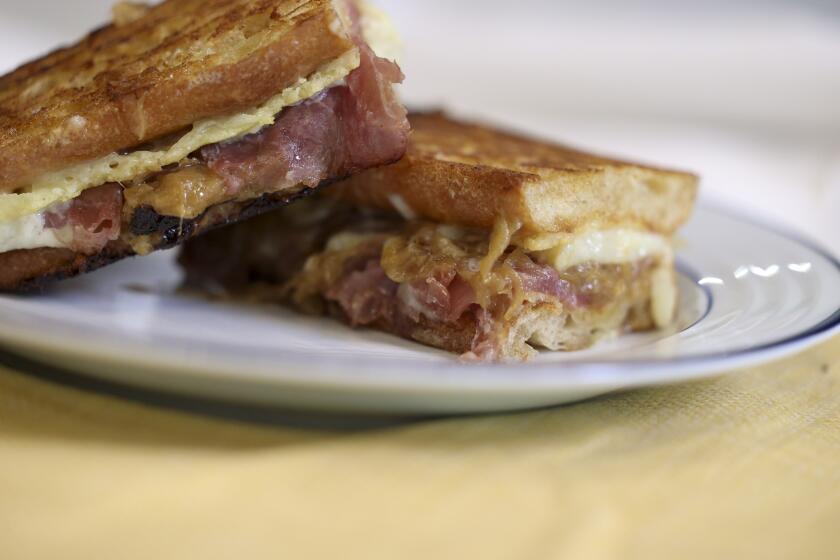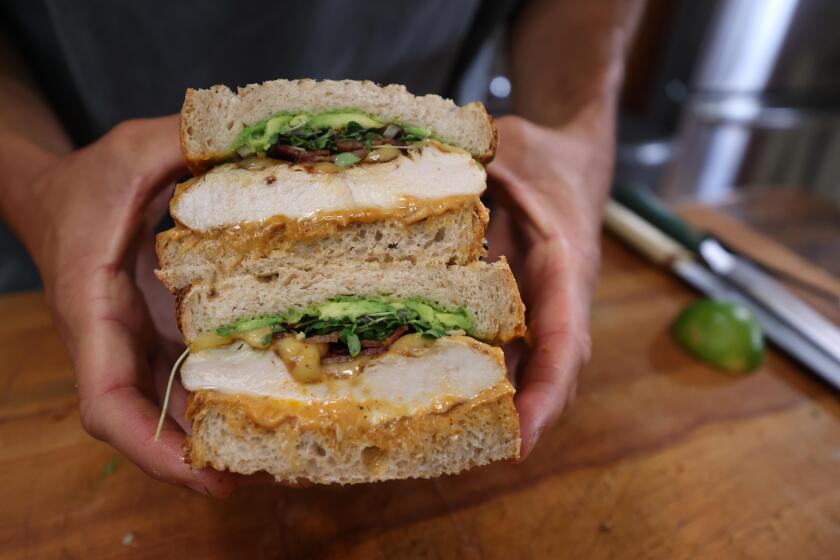Long life for Kalin Cellars’ California wines

For most of the last year, Terrance and Frances Leighton went back and forth on whether the latest dry white wine from their Kalin Cellars winery was ready for release.
Finally, after tasting and re-tasting and making sure every trace of what Frances calls “bottle bitterness” had disappeared, they decided the wine was fit for public unveiling this month.
While other California wineries prepare to unleash their 2009-vintage whites, what the Leightons stewed over is a 1998 Livermore Valley Semillon, a wine already 12 years old. By the standards of Kalin Cellars, however, it’s a cooing infant. The winery’s current releases include a 1997 Potter Valley Reserve Sauvignon Blanc, a 1994 Pinot Noir, a 1995 Chardonnay and — grandmother of them all — a 1990 “Antiquity” Chardonnay.
“Actually, the best-drinking Semillon we have is 1980,” Terrance says. That wine, however, is no longer available for sale.
The Leightons have been making wine for 35 years, and from the start chose to buck what they saw as an emerging trend toward making wines quickly and consuming them young. “We could see already by the mid-1980s that people were starting to commit infanticide — drinking their wines before you could see what they could become,” Terrance says.
Like many other diligent winemakers, the Leightons take enormous care in selecting vineyard sites and yeasts. In the winery, they intervene only minimally in the natural process by which grape juice is transformed into wine (the Leightons do all of the winery work themselves). They induce secondary, malolactic fermentation, which vastly increases flavor components, and avoid filtering.
What really sets them apart, however, is the long — long — bottle aging they give their wines.
Their methods stand in sharp contrast to such modern techniques as blasting crushed grapes with loads of yeast to speed fermentation, or using stainless steel tanks or giving wine a brief visit in oak so it can be labeled “barrel fermented,” then bottling it and hustling it out the door so cash can start flowing in.
The care they take, the Leightons say, guarantees the extraordinary long life and development-ability of their wines. It also puts the lie to the persistent notion that California wines are inevitably puny agers.
A case in point is their Semillon, grown in the gravelly Livermore Valley between Oakland and San Jose. Semillon is a grape best known for producing Sauternes, but in Bordeaux it’s also vinified dry. Few California winemakers produce dry wine made primarily of Semillon. Most grow the varietal to blend with Sauvignon Blanc to help soften the latter’s edginess.
“The problem with Semillon in California was that it had this reputation as a junk grape,” Terrance says. “And if you do it in heavy soil, like in Napa and Sonoma, it’s incredibly vigorous and it makes just innocuous, generic white wine. The thing about the Livermore Valley, however, is that it’s an old riverbed — the same as the Graves soil in Bordeaux. If you put Semillon in this nutrient-deprived, gravelly soil … the vigor is naturally controlled.
“Our idea was, you’ve got Bordeaux properties like Pavillon Blanc from Chateau Margaux, Chateau Laville Haut-Brion, Chateau Haut Brion Blanc — and these are serious, long-term aging, world-class white wines. You shouldn’t be trying to do fast methods with this grape. Really, Semillon for us is the Cabernet analog for white wines. Those wines are ageless. They just get deeper and deeper and deeper in color, and they get more complex.”
The culminating effects of long bottle aging are evident in all Kalin Cellars wines. It gives the Sauvignon Blanc a waxy, nutty quality without sacrificing high-toned citrus flavors or minerality. It imparts a dry, honeyed creaminess to the Semillon, and tightly weaves the Chardonnay’s intense lemony-ness into the fabric of the wine. To the Pinot Noir, it confers a gamey, barnyard quality that makes the wine “the closest thing to Burgundy in California,” says Barry Herbst, general manager of the Rare Wine Co. in Sonoma. The process of bottle aging is the only way to avoid the candied-fruit flavors that tend to characterize even the best-made younger California Pinots, Herbst says.
Kalin (the name derives from a Northern California Native American word for “ocean”) is based in Novato, north of San Francisco. It’s a small operation, producing about 7,000 cases of wine a year from grapes it buys from selected growers and vineyards. Its wines have earned a following especially among restaurant sommeliers, who value their mouth-filling richness, layered complexity and bright, acidic food-friendliness. Wine writer Robert Parker has called Terrance Leighton “one of California’s two most talented winemakers” and his products “the wines of a genius.”
A stout man of 65 with a precise fringe of white beard and a merry demeanor, Terrance Leighton is a retired professor of microbiology at UC Berkeley, where Frances worked as a research assistant. He still does scientific research, in a laboratory at Children’s Hospital in Oakland.
More than three decades ago, Leighton turned his scientific expertise to wine yeasts and found that, while old European vineyards had long-established, beneficial micro-organisms in the soil and on the grapes, such was not the case in California. “Here what you found on the grapes, you would not want to make wine with,” he says. “They’re essentially spoilage agents.”
The upshot was that “going natural” — that is, relying on wild yeasts — was not the optimal way of making wine in California (even though the method continues to have its adherents). Leighton, accordingly, began cultivating imported strains of yeast, and striving to match them as precisely as possible to certain varieties of grapes from certain vineyards. Many of the strains he cultivated are also used by other California wineries.
Kalin Cellars does not promote its wines, which come clad in the simplest of labels. Most of its production goes to restaurants throughout the United States (locally, the likes of Patina downtown and Melisse in Santa Monica). Some are available at Los Angeles-area Bristol Farms markets. All current releases can be purchased through the winery’s no-frills website (www.kalincellars.com). The Sauvignon Blanc and Semillon sell for $30, the 1995 Chardonnay for $36, and the 1990 Chardonnay for $60. Kalin’s 1998 Pinot Noir lists for $44, and its 1994 Pinot Noir for $60.
Silvester Fernandes, sommelier at Patina, says he was “really amazed by the Burgundian character” of Kalin’s ’94 Chardonnay and ’97 Pinot Noir when he first encountered them. The wines, both of which are on Patina’s wine list, “have to have very big, strong shoulders to keep in the cellar for so long,” he says.
Fernandes says the very age of the wines sometimes makes them a difficult sell to customers unused to seeing such old vintages of California wines, especially whites. “I used to have his Sauvignon Blanc by the glass, and sometimes a customer would actually send it back because they were expecting something crisp and light, whereas his Sauvignon Blanc is more like good white Bordeaux.”
Brian Kalliel, sommelier at Melisse, says he considers Leighton “a very cosmopolitan, European-type guy, and his manners and his class are kind of how his wines drink, with restraint and complexity. His wines are outside the norm. They’re not the big bruisers on the corner. His Pinot Noirs taste like Pinot Noir — and not like Syrah, unlike a lot of domestic Pinots.”
The Leightons, perhaps inevitably, have taken their traditional methods to their source, namely, Burgundy. They own two small Pinot Noir vineyards in Beaune, one of them designated “premier cru.” Since 1994, with Frances presiding over the winemaking, they have been producing 80 cases of red wine. They sell it to a handful of select restaurants and retail shops, Leighton says, with a grin, “as a reward for good behavior.”
More to Read
Eat your way across L.A.
Get our weekly Tasting Notes newsletter for reviews, news and more.
You may occasionally receive promotional content from the Los Angeles Times.










